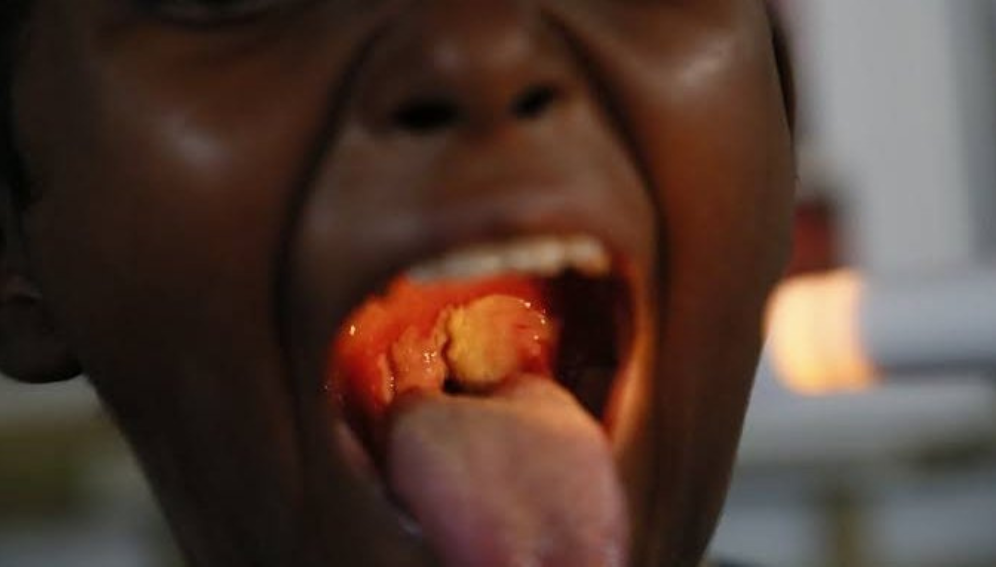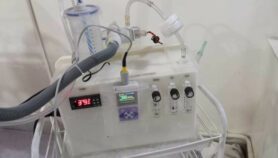By: Royal Uche
Send to a friend
The details you provide on this page will not be used to send unsolicited email, and will not be sold to a 3rd party. See privacy policy.
[LAGOS] Low vaccine coverage and weak infrastructure have fuelled a recurrence of diphtheria in Nigeria, especially in rural areas beset by poor access to healthcare services, public health experts say.
The highly contagious bacterial infection which affects a person’s nose, throat and skin is potentially fatal. But it can be prevented in children with a pentavalent (five-in-one) vaccine.
As of 15 March, 21 states had reported a total of 1,064 suspected cases – 79 per cent of them in Kano – according to a situational report from the Nigeria Centre for Disease Control and Prevention (NCDC). Of those, around a third (389) have been confirmed.
The majority (78 per cent) of confirmed cases are children aged two to 14 years and 62 of them have died from the disease.
The NCDC officially declared an outbreak of diptheria on 20 January after it was notified of suspected cases of the disease in Kano and Lagos states on 1 December 2022.
But experts say that Nigeria’s routine immunisation coverage has been poor and fluctuated significantly over the last decade.
“We have supplied additional pentavalent [the vaccine for diphtheria] vaccines to all the 36 states.”
Bassey Okposen, Nigeria’s National Primary Health Care Development Agency
“The persistence of diphtheria in Nigeria has been linked to various factors, including low vaccine coverage, insufficient vaccine storage and transportation,” say researchers in an article on potential solutions published in the March issue of New Microbes and New Infections.
“Low accessibility to healthcare facilities, especially in rural regions, exacerbates the issue, resulting in delayed diagnosis and treatment.”
Ritik Agrawal, lead author of the article and a public health consultant at the Regional Medical Research Centre in Odisha, India, tells SciDev.Net that inadequate disease surveillance and response systems, marked by a lack of resources, personnel, and cooperation between government agencies, impedes the effective detection and response to diphtheria outbreaks.
Agrawal says that the Nigerian government must step up efforts to prevent future outbreaks of diphtheria following the recurrence.
Nigeria had recorded diphtheria outbreaks in the past, most significantly from February to November 2011 in rural areas of Borno, northeast, Nigeria.
Bassey Okposen, the director of disease control and immunisation at Nigeria’s National Primary Health Care Development Agency (NPHCDA), says that immunisation is being stepped up in the country.



Symptoms of diphtheria include a thick grey-white coating that may cover the back of the throat, nose and tongue.
“We have supplied additional pentavalent vaccines to all the 36 states and Federal Capital Territory for vaccination of children less than four years and additional 500,000 doses of tetanus and diphtheria vaccines to Kano state for the vaccination of age group four to 14 years and the health care workers,” he explains.
Salma Ali Suwaid, head of the emergency paediatric unit at the Murtala Mohammed Specialist Hospital in Kano, said at a webinar organised by the NCDC early this month (6 March) that in Kano, north west of Nigeria, only 20 per cent of children aged four to 14 years were fully vaccinated with tetanus and diphtheria vaccines. She said ten per cent were partly vaccinated and 54 per cent not vaccinated.
She said the gap in coverage was resulting in more cases and deaths in the state.
Suwaid cited the case of an unvaccinated eight-year-old boy, who was diagnosed with haemorrhagic diphtheria and died within one hour of admission.
Public health experts are calling for more action to help prevent future outbreaks.
“The first step is to increase awareness about the disease and the vaccine among the community, healthcare workers and policymakers, which can help in early detection, prevention and control and increase vaccination coverage,” Agrawal explains.
“Additionally, improving access to healthcare services, particularly in remote and underserved areas, can help in early detection and prompt treatment of diphtheria cases, which can prevent further transmission.”
This piece was produced by SciDev.Net’s Sub-Saharan Africa English desk.
















